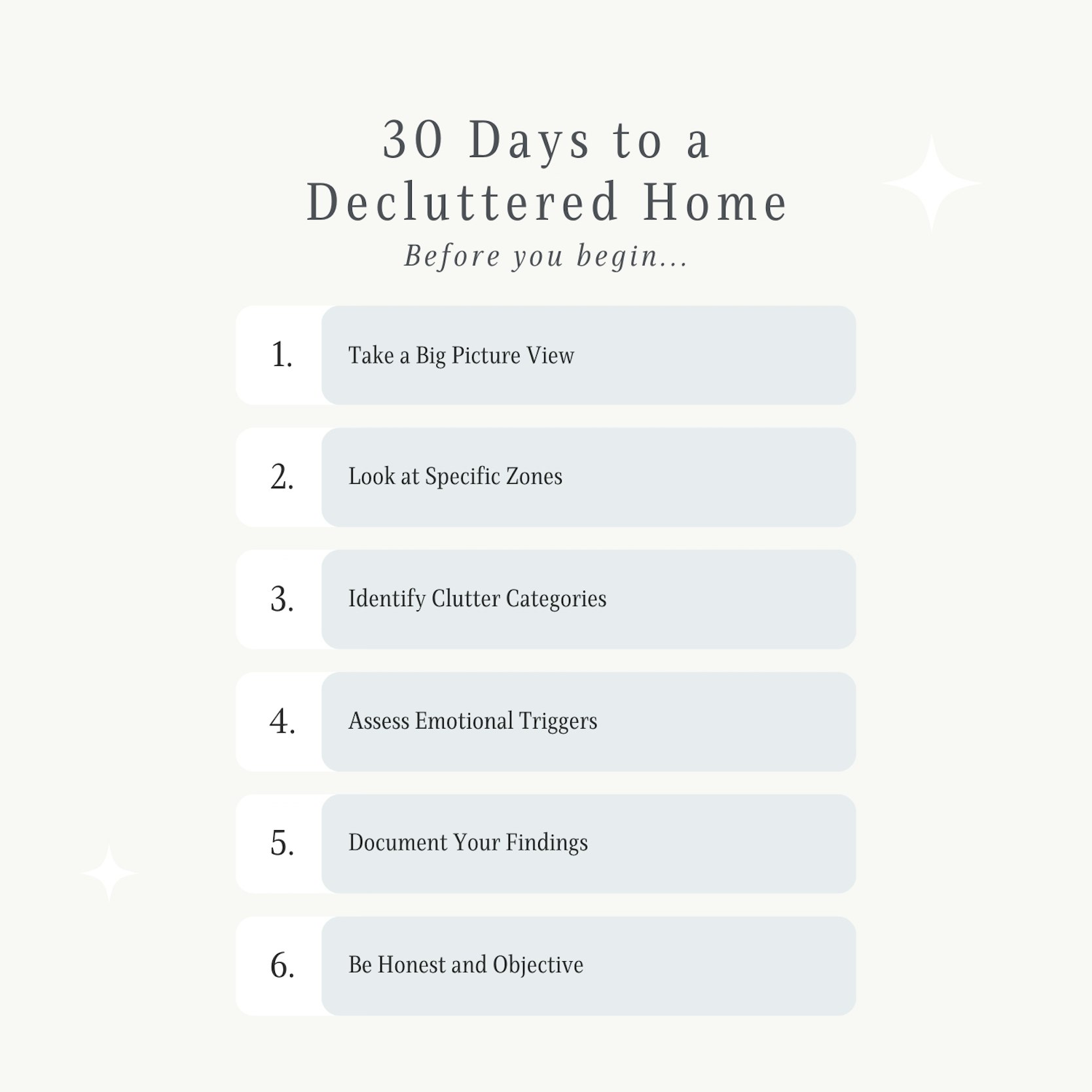
Living in a cluttered environment can have a detrimental impact on your well-being. It can create stress, hinder productivity, and negatively affect your mental health. Taking control of your home environment starts with a thorough assessment of your current clutter situation. We've developed a 30 day decluttering checklist for you, but before you get started, it will be helpful to follow these steps to identify areas that need improvement and pave the way for a more organized and peaceful living space. You've got this!!

Step 1: Take a Big Picture View
Start by taking a broad look at your entire living space. Walk through each room and observe the overall level of clutter. Is it overwhelming? Does it make the space feel crowded and uncomfortable? Be honest with yourself and acknowledge any areas that stand out as particularly cluttered. Remember, walk through every space, even bathrooms and closets!
Step 2: Look at Specific Zones
Now, delve deeper into each individual room. Divide them into smaller zones, such as countertops, shelves, closets, drawers, and floors. Evaluate each zone for clutter density and accessibility. Are things piled up, making it difficult to access what you need? Leave no stone unturned.
Step 3: Identify Clutter Categories
Pay close attention to the types of items that contribute to the clutter. Here are some common categories to consider:
- Expired or unused items: This could include food past its expiration date, old magazines, or clothes you no longer wear.
- Duplicates: Do you have multiple copies of the same item, like books, kitchen utensils, or toiletries?
- Broken or damaged items: It's time to let go of anything that is no longer functional or beyond repair.
- Sentimental items: These can be challenging to deal with, but consider if you truly need to keep everything. Can you take photos or store cherished items in a designated memory box?
- Unfinished projects: Are there partially completed projects lying around collecting dust? Decide if you want to finish them or let them go.
Step 4: Assess Emotional Triggers
Which areas of clutter trigger the most negative emotions for you? Does the overflowing inbox on your desk cause anxiety? Does the pile of dirty dishes in the sink make you feel stressed? Recognizing these emotional triggers can be a powerful motivator to take action.
Step 5: Document Your Findings
Take photos or videos of the cluttered areas to capture their current state. This can serve as a valuable reference point as you progress through your decluttering journey.
Step 6: Be Honest and Objective
Throughout the assessment process, be honest with yourself about your relationship with your belongings. Don't be afraid to let go of things that no longer serve a purpose or bring you joy. Remember, decluttering is not about getting rid of everything, but rather about creating a space that feels calm, organized, and supportive of your well-being.
By taking the time to assess your current clutter state and identify areas for improvement, you can embark on a successful journey towards a more organized and fulfilling living environment. Remember, decluttering is a personal process, so tailor your approach to what works best for you.
It doesn't matter when you start. Just print off this checklist, put it where you can see it, and start the work. In 30 days, you'll be able to enjoy a fully decluttered home!